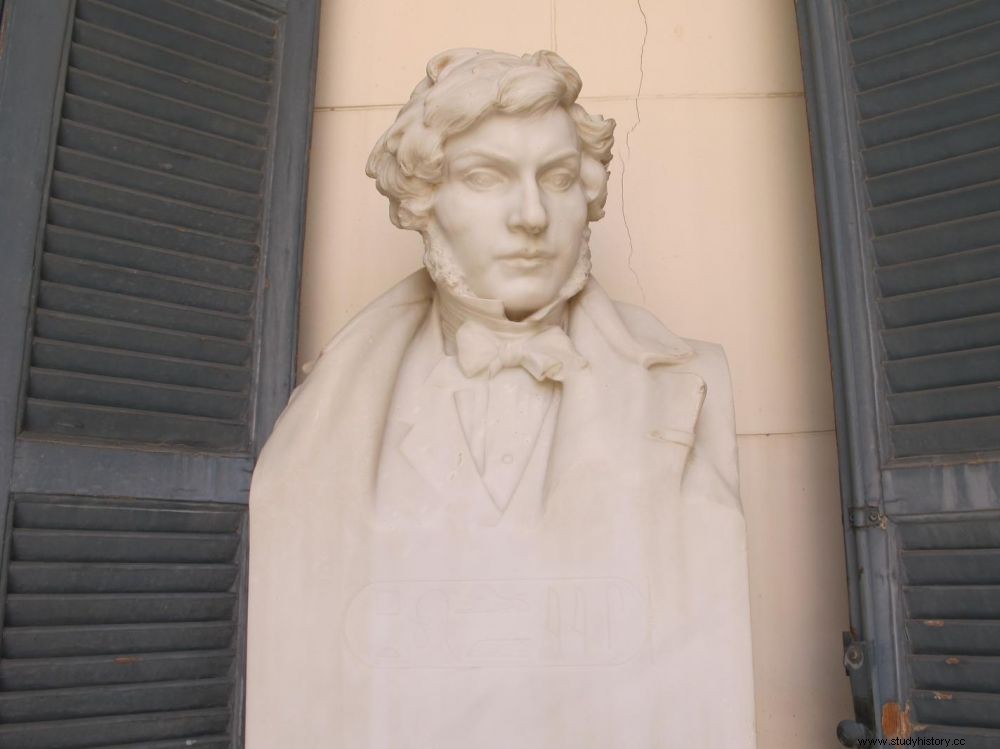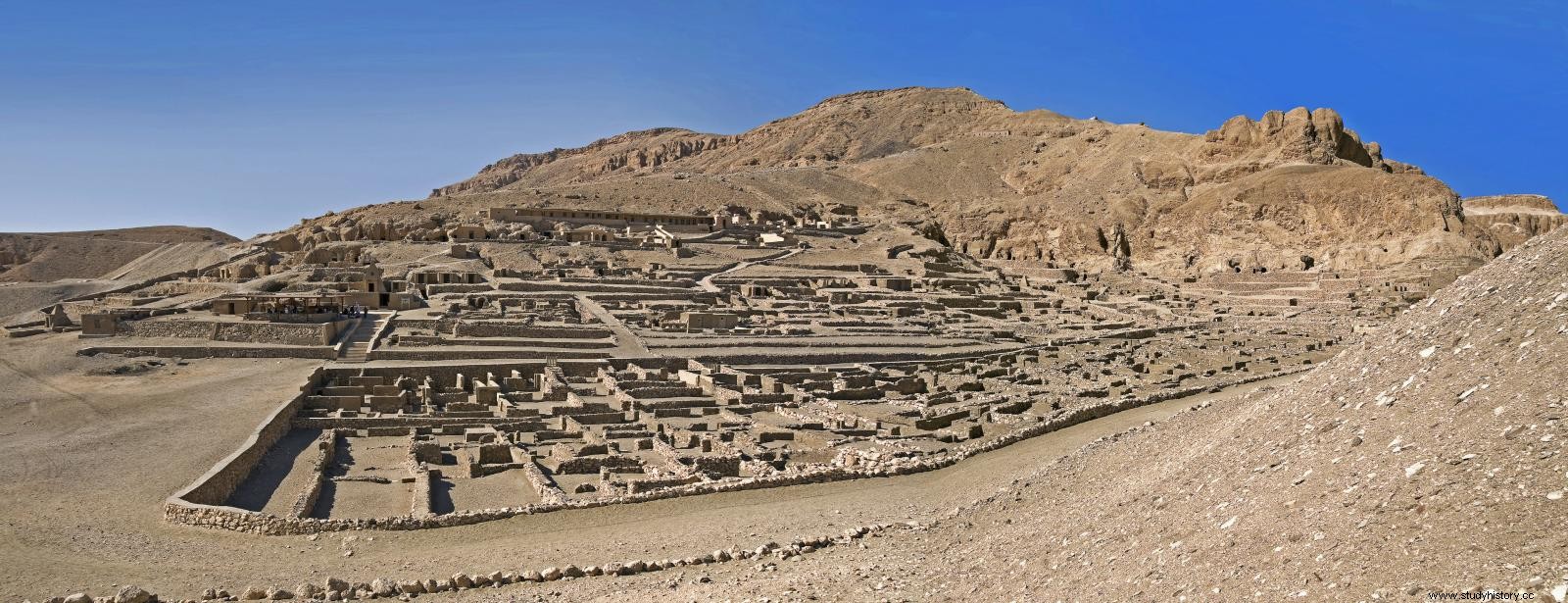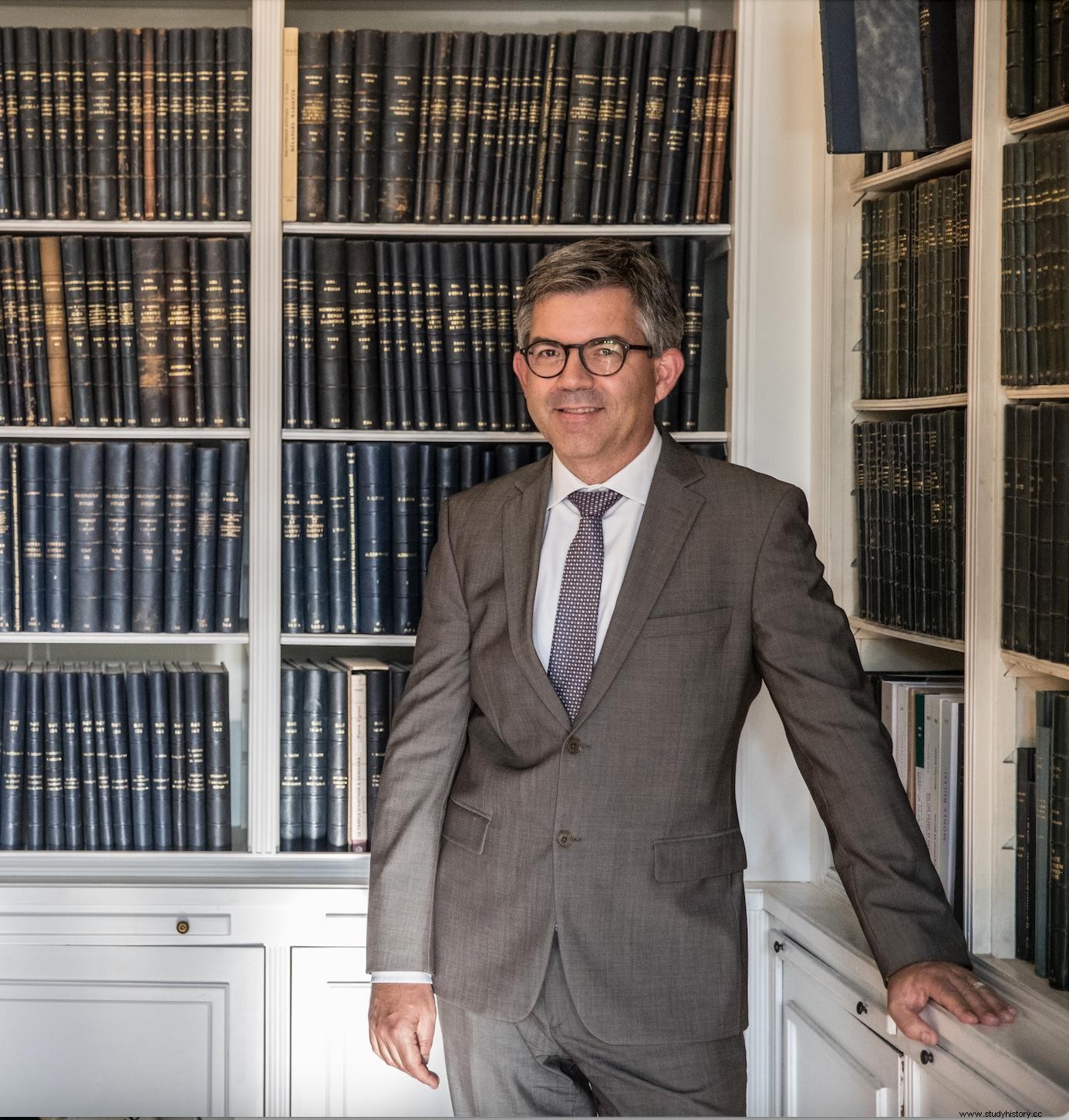Egyptologist, director of studies at the Ecole Pratique des Hautes Etudes, Laurent Coulon is also the director of the French Institute of Oriental Archeology (Ifao). Specialist in the cults of Osiris and Egyptian religion (1 st millennium BC. J.C), he received Sciences et Avenir in the Mounira Palace, seat of the famous Institute, in the heart of Cairo. Interview on the current French archaeological missions in Egypt and the role of the Ifao.

Bust of Jean-François Champollion (1790-1832) at the entrance to the Mounira Palace, headquarters of the French Institute of Oriental Archeology (Ifao), in Cairo (Egypt).
Sciences et Avenir:You have been at the head of the French Institute of Oriental Archeology (Ifao) since 2019. After a revolution (2011), major political upheavals (2015) and a still ongoing global pandemic, how would you describe the situation of French archeology in Egypt?
Laurent Coulon: Recent events have shaken up the world of research, and not just in Egypt. But our institution, the Ifao, remained stable during these periods of crisis and there were no long interruptions in the activity of our sites. Regarding the pandemic, after a short period of confinement, we very quickly resumed archaeological excavations within the framework of a strict health protocol, established in agreement with the Egyptian Ministry of Tourism and Antiquities. In 2020, half of the planned operations were able to take place, and for this year 2021, we have returned to more or less normal operation. The Ifao has made every effort to continue its activity, and to be at the side of our Egyptian partners beyond the crises and difficulties, because many members of the Ifao staff are Egyptian, as are those who work on construction sites. And for them, these jobs are vital.
"the French Institute of Oriental Archeology welcomes more than 550 researchers per year"
In 2019, you were the author of a book:"French Archeology in Egypt ". Does this archeology have a singularity?
We are the result of a very long history and in 2019, the Ifao celebrated its 140th anniversary! About forty French archaeological missions are active in Egypt and the Ifao alone oversees nearly 35 of them! With the Franco-Egyptian Center for the Study of the Temples of Karnak (CFEETK), the French Archaeological Mission of Western Thebes (MAFTP) and the Ramesseum, the Center for Alexandrian Studies (CEAlex), the Louvre Museum and the Institut research for development in the Aswan region, multiple fronts of research, have been opened. All are vectors of innovation in the contribution to the knowledge of ancient Egypt. We did not remain confined to major sites of particularly productive necropolises. We have selected places that could shed light on new issues such as the expansion of Egypt to its periphery, trade, the management of raw materials or the achievements of the pharaonic state. All this while maintaining more traditional missions in the Nile Valley, such as Médamoud, Deir el-Médina, the village of the Valley of the Kings, or Dendara. The issues have of course evolved since the first research of the 20th century and we are open to scientific fields and very varied methodologies and technologies. The Ifao welcomes more than 550 researchers per year!

General view of the archaeological site of Deir el-Medina, in the Theban Mountains, west of Luxor. Designated by its Arabic name meaning "the convent of the city", this village was that of the craftsmen in charge of the manufacture and decoration of the royal tombs dug in the Valley of the Queens and the Valley of the Kings. Its abandonment dates back to the end of the XX Dynasty, during the reign of Ramses XI. The Ifao has been working there since 1917. Credits:AFP
What are these new horizons of investigations?
Over the past fifty years, these openings have been made towards western oases, such as Kharga, Bahariya or even Dakhla. The Ifao thus excavated the site of Balat, a pharaonic settlement of the Old Kingdom, totally unknown until then. On the other hand, in the 1990s and 2000s, work was launched in the Alexandria region by our partners at the Center for Alexandrian Studies (CEAlex), created by Jean-Yves Empereur, and of which the Ifao and the Cnrs presided over the birth. This now makes it possible to write a global history of the site of Alexandria from Antiquity to the contemporary era. Not to mention the work at Taposiris Magna, and at the nearby site of Plinthine, where wine-growing facilities and evidence of an older than expected pharaonic presence have been unearthed. Likewise, with the new shipyards on the shores of the Red Sea, at Ayn Soukhna or Ouadi el-Jarf, these intermediate ports used by the pharaohs from the Fourth Dynasty.
Sciences et Avenir:You have been at the head of the French Institute of Oriental Archeology (Ifao) since 2019. After a revolution (2011), major political upheavals (2015) and a still ongoing global pandemic, how would you describe the situation of French archeology in Egypt?
Laurent Coulon: Recent events have shaken up the world of research, and not just in Egypt. But our institution, the Ifao, remained stable during these periods of crisis and there were no long interruptions in the activity of our sites. Regarding the pandemic, after a short period of confinement, we very quickly resumed archaeological excavations within the framework of a strict health protocol, established in agreement with the Egyptian Ministry of Tourism and Antiquities. In 2020, half of the planned operations were able to take place, and for this year 2021, we have returned to more or less normal operation. The Ifao has made every effort to continue its activity, and to be at the side of our Egyptian partners beyond the crises and difficulties, because many members of the Ifao staff are Egyptian, as are those who work on construction sites. And for them, these jobs are vital.
"the French Institute of Oriental Archeology welcomes more than 550 researchers per year"
In 2019, you were the author of a book:"French Archeology in Egypt ". Does this archeology have a singularity?
We are the result of a very long history and in 2019, the Ifao celebrated its 140th anniversary! About forty French archaeological missions are active in Egypt and the Ifao alone oversees nearly 35 of them! With the Franco-Egyptian Center for the Study of the Temples of Karnak (CFEETK), the French Archaeological Mission of Western Thebes (MAFTP) and the Ramesseum, the Center for Alexandrian Studies (CEAlex), the Louvre Museum and the Institut research for development in the Aswan region, multiple fronts of research, have been opened. All are vectors of innovation in the contribution to the knowledge of ancient Egypt. We did not remain confined to major sites of particularly productive necropolises. We have selected places that could shed light on new issues such as the expansion of Egypt to its periphery, trade, the management of raw materials or the achievements of the pharaonic state. All this while maintaining more traditional missions in the Nile Valley, such as Médamoud, Deir el-Médina, the village of the Valley of the Kings, or Dendara. The issues have of course evolved since the first research of the 20th century and we are open to scientific fields and very varied methodologies and technologies. The Ifao welcomes more than 550 researchers per year!

General view of the archaeological site of Deir el-Medina, in the Theban Mountains, west of Luxor. Designated by its Arabic name meaning "the convent of the city", this village was that of the craftsmen in charge of the manufacture and decoration of the royal tombs dug in the Valley of the Queens and the Valley of the Kings. Its abandonment dates back to the end of the XX Dynasty, during the reign of Ramses XI. The Ifao has been working there since 1917. Credits:AFP
What are these new horizons of investigations?
Over the past fifty years, these openings have been made towards western oases, such as Kharga, Bahariya or even Dakhla. The Ifao thus excavated the site of Balat, a pharaonic settlement of the Old Kingdom, totally unknown until then. On the other hand, in the 1990s and 2000s, work was launched in the Alexandria region by our partners at the Center for Alexandrian Studies (CEAlex), created by Jean-Yves Empereur, and of which the Ifao and the Cnrs presided over the birth. This now makes it possible to write a global history of the site of Alexandria from Antiquity to the contemporary era. Not to mention the work at Taposiris Magna, and at the nearby site of Plinthine, where wine-growing facilities and evidence of an older than expected pharaonic presence have been unearthed. Similarly, with the new shipyards on the shores of the Red Sea, at Ayn Soukhna or Ouadi el-Jarf, these intermediate ports used by the pharaohs from the IV e dynasty. This is where French Egyptologist Pierre Tallet made extraordinary discoveries of papyrus. It is precisely in these margins of Egypt that these fundamental documents were brought to light for understanding the functioning of the central administration at the time of Pharaoh Cheops, the builder of the great pyramid. Finally, it is by moving away from the center towards the periphery and by leaving in a certain way traditional Egypt as one represents it, that fundamental discoveries to understand the very heart of the pharaonic civilization were carried out. .
In recent years, we have also seen a takeover of archeology by the Egyptian authorities. No mission seems to be able to exist without double supervision. Is that the case ?
It is not systematic, nor imposed, but it is true that there is an incentive to develop partnerships, as we do in particular with teachers from the University of Ain Shams, in Cairo. Our Egyptian colleagues naturally want to highlight their ability to carry out projects and make discoveries on their behalf in their country. An Egyptian researcher, Ahmed al-Choki, for example, heads an IFAO mission to the Ottoman citadel of Qal'at Cheikh Hammam, in Upper Egypt. The Egyptian authorities are very sensitive to the idea that we are real partners.
That is?
The wish is that once the excavations are completed, a participation of the missions in the site management - namely the restoration of monuments and their enhancement – be put in place. It has become fundamental. A foreign mission working on a site must now also monitor it, so that it is returned in better condition than the one in which it was found. This with the idea that it can then be opened to the public. The teams in place must therefore bear the catering and other costs of the sites on which they work. The excavation process no longer stops at scientific research but also includes the enhancement of the excavated areas.

Laurent Coulon, director of the French Institute of Oriental Archaeology, in his office at the Ifao, in Cairo (Egypt).
"We have set up a Carbon 14 dating lab"
Archeology is an element of soft-power. Egypt, like Iraq or Syria are or have been countries with strong presence of foreign archaeological missions. But times have changed. How do you see this archeology evolving in the medium to long term?
In Egypt, partnerships with foreign institutes and missions, with their long tradition of expertise, remain fundamental because this country has fabulous archaeological potential and there is no question of restricting these activities. French and other archaeological missions are also the ambassadors of the prestige of Egyptian archeology beyond the borders. And each team involved reflects Egypt's rich history in its home country. A way of promoting sites spread over a vast territory, the management of which could certainly exceed the capacity of the Egyptian Ministry of Antiquities if it were to manage them alone. Another issue is very important for us:to develop this archeology - often identified with the discovery of prestigious objects - towards a modern archeology with rigorous scientific methods, using cutting-edge technologies. Hence, among other things, the installation in the premises of the Ifao of a Carbon 14 dating laboratory.
The IFAO was created in 1880 and its role has evolved over time. Today, how would you describe it?
We are part of a network of five French schools abroad, including the French School of Athens, the first to be created (1846); the French School of Rome (1880); the French School of the Far East (Efeo) (1898), and finally the Casa Velasquez (1920). So many institutions whose skills we seek to network to create a common identity with the aim of positioning themselves as major players in research. The Ifao depends on the French Ministry of Higher Education, Research and Innovation, and we receive an endowment in the same way as other universities in France. The Ifao also benefits from its own resources and the support of various foundations and patronages. It also funds its research via responses to calls for projects such as those from the National Research Agency (ANR) or Europe (ERC). We seek to multiply our actions to benefit from external financial contributions, but also to perpetuate a capital of research data accumulated over 140 years! A real treasure!
Interview by Bernadette Arnaud in Cairo.
Express Biography:
Normalien, agrégé in classics, member of the IFAO (1998 to 2002), lecturer at Lyon2, CNRS-Hisoma researcher (History and source of the ancient worlds)-Lyon, and director of studies at the EPHE since 2015 , Laurent Coulon was President of the French Society of Egyptology from 2017-2019. Gaston Maspero Prize from the Academy of Inscriptions and Belles-Lettres, director of the French Institute of Oriental Archeology (Ifao) since 2019, he is the co-editor of a book on "French Archeology in Egypt », Ifao editions (2019).
